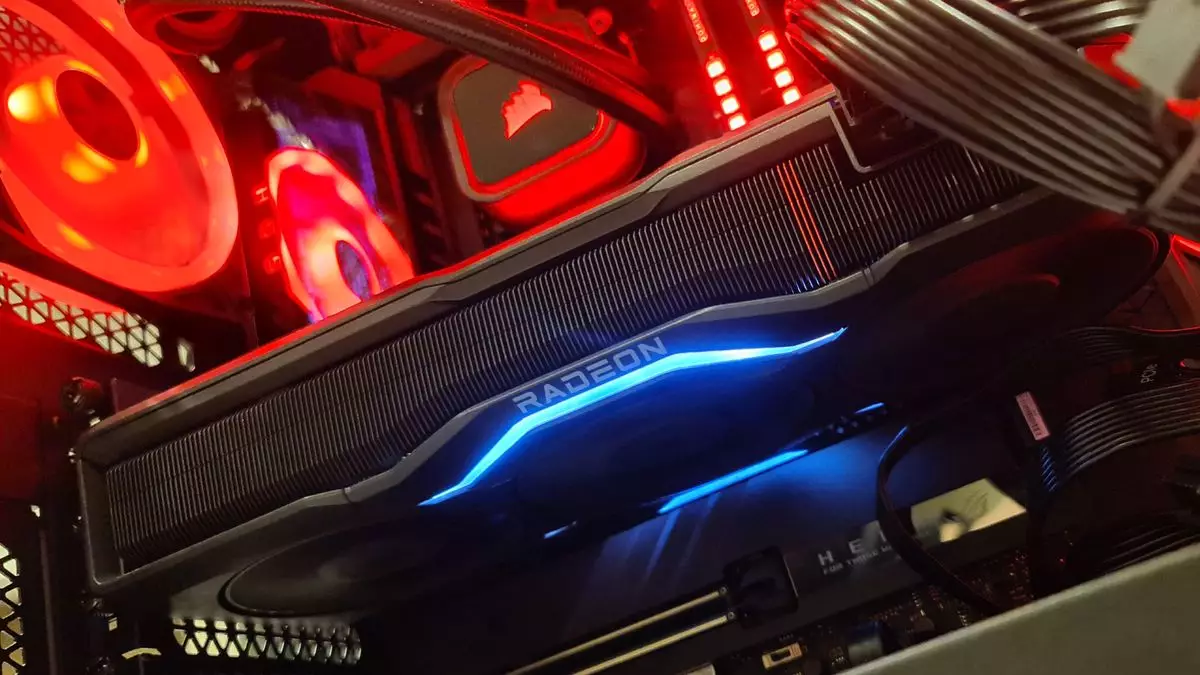As the tech community eagerly anticipates the launch of Nvidia’s GeForce RTX 50-series and AMD’s Radeon RX 8000-series graphics cards, the focus often shifts away from the vital software components that empower these hardware upgrades. In a recent announcement, AMD introduced its Adrenalin 24.9.1 driver release, which claims to amplify gaming performance significantly through innovative technologies such as its updated frame generation feature, AFMF 2. This article explores the latest advancements in AMD’s driver, its implications for gaming, and what it means for users about to embrace cutting-edge graphics technology.
The AMD Fluid Motion Frames (AFMF) technology, now in its second generation, serves as a crucial leap forward in AMD’s gaming software toolkit. With the debut of AFMF 2, the function of frame generation has advanced beyond what was initially offered in the first generation, which has been available since early January. The new version promises improved performance metrics, including enhancements in quality and reduced latency, particularly when utilized on integrated graphics systems.
By allowing users to toggle this frame generation feature directly within the Adrenalin software, AMD positions itself in direct competition with Nvidia’s DLSS technology. Although both systems aim to enhance performance, the primary distinction lies in AFMF’s flexibility. This driver-level feature does not require per-game optimizations, making it an appealing choice for gamers who seek streamlined setups without the need for extensive tuning or configuration.
The marketing narrative surrounding AFMF 2 boasts an impressive “2.5x higher frame rates in selected titles.” However, this claim warrants scrutiny, as it may not exclusively reflect the capabilities of AFMF 2. Recent tests conducted on prior iterations of the technology showed only modest improvements to frame rates, with notable advancements in latency and handling of dynamic motions rather than sheer speed.
Moreover, while there seems to be substantial improvement with AFMF 2, these results often intertwine with other AMD optimizations such as FSR (FidelityFX Super Resolution) and HYPR-RX, which aids settings adjustments for optimal performance. Therefore, users looking to achieve the touted frame rates should be prepared to leverage multiple AMD technologies collectively rather than solely relying on AFMF 2.
While it may be easy to overstate the effect of AFMF 2 in isolation, it’s essential to consider its value within the broader ecosystem of AMD’s offerings. For gamers particularly engaged with titles that do not yet support FSR 3, AFMF 2 serves as a welcomed tool. By enabling this feature, users can enjoy enhanced experiences where higher frame rates and smoother gameplay are essential for competitive performance.
Furthermore, Radeon 7000-series and 6000-series GPU owners can access AFMF 2 through the Adrenalin software with relative ease. This accessibility is crucial considering the growing gaming market—especially among players using handheld devices increasingly powered by AMD technology.
While the introduction of AFMF 2 captures much of the spotlight, the latest Adrenalin driver also brings forth noteworthy additions such as Geometric Downscaling. This feature addresses the visual artifacts and aliasing often encountered when playing videos in windows smaller than the device’s native resolution. By employing advanced algorithms to enhance video quality, AMD continues to demonstrate a commitment to improving the overall user experience beyond gaming performance alone.
As the landscape of graphics technology continues to shift with the impending release of new GPUs, the advancements brought forth by AMD’s Adrenalin 24.9.1 will undoubtedly resonate with many users. While AFMF 2 may not revolutionize gaming on its own, it signifies AMD’s dedication to maximizing performance and user experience through continuous software improvements.
As gamers embark on upgrading their hardware or simply seeking to enhance gameplay, AMD’s latest driver serves as an essential component of that journey, underscoring the importance of robust software in unlocking the full potential of formidable hardware like the upcoming Radeon RX 8000-series graphics cards. Balancing performance claims with practical applications will help users effectively navigate the evolving gaming landscape.

